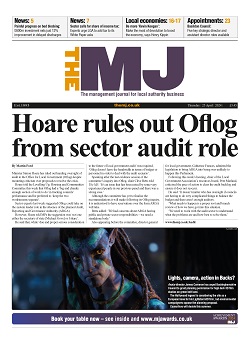March brings a laser focus to scheduled elections work, with Notices of Election for 4 May due to be published by 27 March. For electoral administrators it is all systems go after months of planning, including introducing the first of many Elections Act 2022 changes.
Recent years have seen many adjustments to how elections run, but none so fundamental, so visible or introduced so close to scheduled polls as voter ID.
From 4 May 2023, any elector turning up to their polling station at certain polls must show an acceptable form of photo ID to be able to vote.
The UK Government has stated voter ID is common worldwide and will stop the potential for voter fraud. Detractors counter there are low levels of proven fraud and voter ID will disenfranchise already marginalised groups.
The public debate will undoubtedly continue. Notwithstanding the differences of opinion being expressed, returning officers, electoral registration officers and electoral administrators are heads-down, doing their best to understand and implement still-emerging detail.
Secondary legislation only became law in January, just four months before scheduled polls and two months less than the Gould Principle recommends. This lateness means official guidance only began to arrive in recent weeks, and continues to arrive, with knock-on effects to administrator training and planning.
A mammoth issue for 4 May is trying to reach every elector with correct information about acceptable photo ID, and how to apply for a free Voter Authority Certificate (VAC) if needed. This includes contacting all anonymous electors, who need to follow a separate process.
The Electoral Commission’s voter ID awareness-raising campaign launched in January. Local authorities and other organisations are supporting this, alongside their own communications. But some electors will inevitably arrive to vote still unaware about needing photo ID and be turned away.
As of 1 March, just under 26,000 VAC applications had been made. We expect numbers to rise once poll cards are issued, and again around the application deadline of 5pm on 25 April.
While VAC printing and distribution is centralised, electoral administrators are having to factor in the huge additional task of manually checking each application, chiefly to ensure photos meet official guidelines. In-person applications may also increase at council offices and contact points, needing trained support staff ready to meet potential demand.
A rush of last-minute VAC applications seems inevitable at a major election timetable pinch-point. Worryingly, it would also leave any electors making invalid applications little time to apply for alternative ID.
Some Association of Electoral Administrators’ members have already reported a rise in postal vote applications as electors express a wish not to show ID at the polling station. If this trends, additional applications will potentially exacerbate already heavy workloads.
As for polling station venues, ongoing pandemic effects mean fewer available locations and higher costs.
New accessibility requirements must be met, and voter ID will increase polling station queues and wait times. A private area for electors to show ID if they request it, or to remove face coverings, is legally required.
Polling stations may have to be relocated, inconveniencing and confusing some electors.
Polling station staff recruitment and retention remains concerning, even with funding available for extra staff – assuming they can be found. Checking ID and potentially turning electors away are significant new responsibilities. Some poll clerks and presiding officers have already said ‘enough is enough’ and walked away.
Misinformation, abuse of polling station and election staff, and potential protests are just some additional risks for May. Public acknowledgement that returning officers and their staff are simply implementing the law as required will be crucial.
This last point extends to candidates, agents and campaigners. With council seats often won by a handful of votes, the impulse to call foul and cite voter ID as the cause of losses may be tempting.
Despite all this, we remain confident the electoral community will step up as always, manufacture solutions and continue to deliver safe and secure elections.
That said, we need wide acceptance and understanding that voter ID – and almost overshadowed new accessibility requirements – will not be perfect at the first attempt. Issues and unintended consequences are inevitable. Seeking to understand rather than blame will be vital.
Positives and negatives from 4 May will inform improvements for future elections. In a few years this will be business as usual. Until then, our support is on offer every step of the way.
Peter Stanyon is chief executive of the Association of Electoral Administrators
@AEA_Elections



